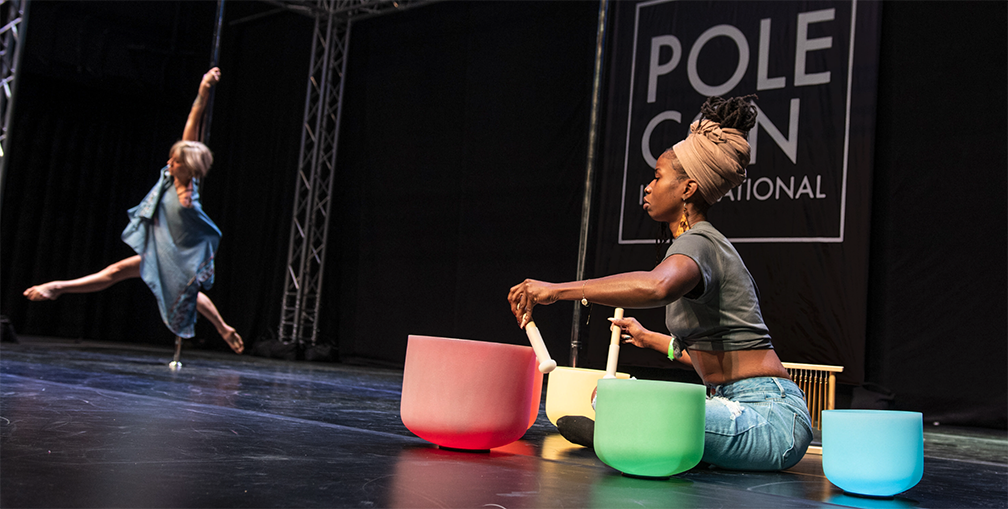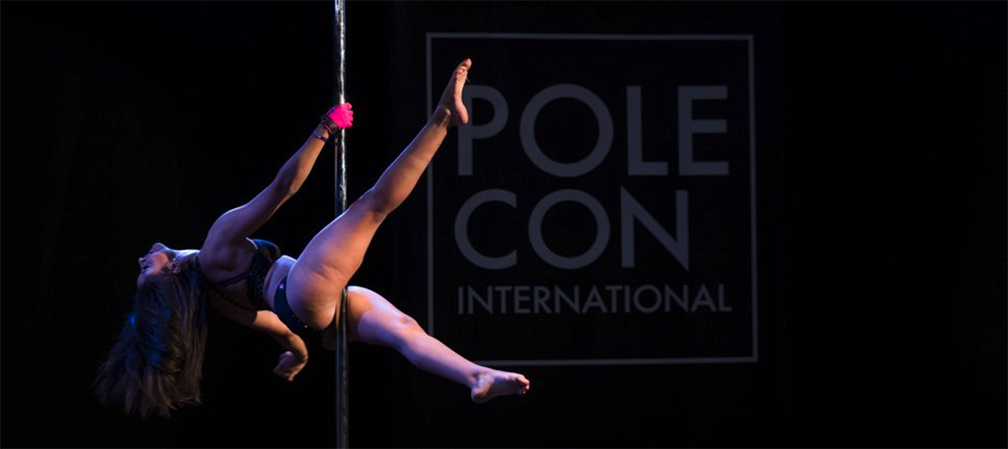You’re doing everything right—Training both sides. Eating well. Hitting the gym and the studio. …But…

Paying attention to our breath
What if I told you that you were breathing “wrong?” You would probably be pretty annoyed, huh?
“I’m still alive!” You might exclaim.” How can I be breathing ‘wrong?!’“ You might even in throw some expletives in there for good measure.
I know that’s how you’re feeling because that’s exactly how I felt the first time my physical therapist told me that I was breathing “wrong.”
“You’re a neck breather,” she said.
“A what? Is that bad?” “That sounds bad?” I retorted.
“Well, it’s not good…”
Turns out that breathing—along with posture and alignment—is something our modern world is royally screwing up for quite a lot of us.
Breathing wrong?
“Wrong” is a simplified way to look at it. The more accurate way to describe what we’re doing is that we are generally not breathing as intentionally, as effectively, or even as much as we could. And that is impacting our stress levels, our anxiety, our ability to relax and recover from workouts, and even our digestion. It is impacting how we sleep and may also be reshaping the size of our mouths shrinking our sinus cavities and making it harder to breathe so we get caught in a never-ending cycle of breathing less.
Yup. It sounds crazy but breathing, something we’ve been managing to do for thousands of years, is something that we, broadly, as a society, have lost touch with.
We tend to hold our breath, such as in cases of “email apnea” when we get so focused on our tasks that we literally stop breathing, when we perceive a threat. Our bodies, which are still quite primitive despite all the awesome advances we’ve made as humans, can’t tell the difference between the stress of receiving a touchy email from our boss and the stress of seeing a saber tooth tiger poised to pounce on us.
We often get locked into a “flight, fight, or freeze” mode as we deal with stressors not just from our email but from other mundane “life stuff” like getting cut off in traffic, worrying about being late, worrying about paying our bills, and worrying that no one liked our newest TikTok (But I did the dance SO WELL!). We tend not just to stop breathing but to breath very shallowly.
Being intentional with our breath
To be clear, air when taken in through the nose or the mouth only goes into our lungs. It is also true that we can direct our breath throughout our torso and neck and actually feel those muscles be used as accessory muscles to breathing. AND certain types of breathing, using those accessory muscles, such as breathing into your neck like the way I used to, impacts where in the lungs the breath goes first. Over time this may make it harder to fully access your entire lung capacity and make parts of your torso (front, back, and sides) stiffer from disuse.
The trick is to first learn to identify what you’re doing when you breath. It’s time to play detective again!
Try Now: Breath
Goal: reset your breathing to decrease stress.
Why: most of us breath “wrong” using our neck and chest as ancillary breathing muscles which are less optimal than using other muscles. Long term this can cause pain including headaches. This movement encourages us to learn to use our diaphragm instead.
- From a seated posture, bring one hand to your belly and one hand to your chest.
- Take a slow deep breath in through your nose. Feel your belly expand while your chest does not move or moves very little.
- Release the breath slowly through your mouth. Feel your belly deflate.
- Repeat 3 times.
Progression Options: breath in other positions. Try this while walking, while lying down, while moving in a different way.
Breathing deeply into your belly, which is really using your diaphragm, is a great way to increase your ability to relax. Breath, in addition to nerve glides are the primary ways we can communicate consciously with our nervous system. If we hold our breath unintentionally because we are frightened or because we’re thinking too hard about something such as trying a new movement, we are unconsciously telling our body to “lock it down!” Instead, we want to find an appropriate rhythm with our breath so that we can continue safely moving and not further scare our body into not moving.
Your diaphragm sits in your rib cage, under your lungs. As you inhale, your diaphragm moves down and inflates, pushing down towards your hips. When you exhale, it moves up and looks like an umbrella. This constant movement is like pumping a bellows.
Many people particularly femme presenting humans, may find it challenging to breath into their bellies as adults. Modern society places a premium on thinness and the feeling of constantly “sucking in” ones’ belly can create a breathing pattern that focuses on the chest primarily rising and falling which restricts the diaphragm from moving and keeps the belly looking “thin.”
The idea of sending your breath to different parts of your torso can improve fascial and muscle constriction in those muscles being used as accessory breathing muscles. This is a great way to practice making your intentional breathing, rather than just unconsciously “doing it,” and to develop additional interoception skills. While you can visualize sending your breath to body parts outside of your torso (and neck), there may be some positive mental outcomes but there are unlikely to be any positive fascial or muscle tension outcomes.
Try Now: Breath—breathe into your low back.
Goal: practicing intentional breathing by expanding the torso in specific ways.
Why: learning how to intentionally control our breath can improve muscle and fascial tone in all parts of the torso.
- Lay on your back with your knees bent, feet pressed into the floor.
- Notice the curve of your low back. Is it pressing against the floor? Your low back should have a slight curve and not be pressing down completely flush with the floor.
- Take a slow deep breath in through your nose. Use your breath to feel your low back touch the floor. Do not use your abs, hips, or otherwise push your low back onto the floor. The expansion of the low back should naturally meet the floor.
- Release the breath slowly through your mouth. Feel your low back lift.
- Repeat 3 times.
Option 2: depending on the curve of your spine and the tilt of your pelvis, you may not feel the pressure on the floor from your breath. You may also focus too much on getting it “right” and instead recruit other muscles than focusing on your breathe to accomplish. Or if getting on the floor is challenging for you, try this option.
- From a seated posture in a chair, fold forward, hinging at your waist. Bring your belly onto your thighs. Let your head and arms dangle and keep your feet connected to the floor.
- Keep your back rounded and pelvis tucked. If this isn’t comfortable, put a pillow between your thighs and your chest until it is comfortable.
- Take a slow deep breath in through your nose. Send your breath to your low back. Try to imagine all the breath expanding the muscles and vertebrae in your lumbar spine, your low back, right above your hips. You should not feel your belly pushing your thighs away, or at least try to decrease that sensation.
- Repeat 3 times.
Tip: use your smart phone to film yourself doing this movement. See if you can see your low back rising and falling with your breath.
Progression Options: Try this rounded spine position in a yoga child’s pose on the floor and breath into your low back.
Exploring breathing options
Not all movements and bodies benefit the same way from slow and controlled breaths. Some movements and some people may benefit more from breathing at a more rapid pace and then afterwards may feel a sense of relaxation. The Kundalini Yoga technique known as “breath of fire” is one such technique that uses rapid and sharp breaths and even involves breathing purposefully from one nostril and then the other.
“Contrary to what is sometimes taught, none of these variations in breathing is the only good one, and none of them is really bad. They just fit different circumstances and can be used for different purposes. Therefore, is it important to practice a variety of breathing techniques especially when you realize that you have a tendency to use one technique all the time.” –Blandine Calias-Germain “Anatomy of Breathing”
Focus on breathing in through your nose as much as you can. The nose acts as a filter preventing bacteria and dust from entering the body as well as an air warmer and humidifier all in one. Breathing through your mouth skips all that. If you can’t inhale well through your nose, consider setting some time aside every day (or when you can) to practice it while you’re awake. When you sleep, you’ll default to your preferred breathing method. In the book “Breath” by James Nestor, he experiments on himself by taping his nose closed and then his mouth closed while attempting to sleep to see the quantitative differences in his oxygen level and qualitative differences in how he felt. Nose breathing was by far the better option for him in both measurements.
Exhale through your nose or mouth as feels comfortable and depending on your situation and intention.
Improving your breath
Like everything else, you can absolutely improve, modify, or otherwise positively change the way in which you breath. Being able to hold your breath for long periods of time is not a genetic condition; it is something that can be learned if that is your goal!
Remember, your body, your brain, and even your breath are all unique to you! Experiment with different breathing techniques including breathing at different speeds, intentionally holding your inhales and exhales, changing if you breathe through your nose or your mouth or even with which nostril, seeing if you can “send” your breath to different parts of your torso to feel positive mobility benefits. Consider trying breathing techniques based in ancient practices like yoga (pranayama is the yogic practice of breath) or modern versions like Wim Hof’s breathing techniques that all involve patterns of inhalations, exhalations, and breath holding.
The more I focused on breathing into my belly as my “default” state, the more my neck slowly started to feel less constantly restricted. I could see this in my shoulders too. Over time, there was a more defined shape between my neck, my trapezius muscles, and the rest of my shoulder girdle. Previously this was one solid “ski slope” shape, blending my neck into my shoulders.
How ever you are breathing, make sure to keep doing it! Work towards being as intentional as possible about it to see positive results in how you feel and in how you move.
“Breathe, mother fuckers.” –Wim Hof, The Wim Hoff Method.
Latest posts by Colleen (see all)
- Interview with New PoleCon Instructor: Melonsl - May 9, 2025
- PoleCon Hub Page: PoleCon Info - April 25, 2025
- Interview with New PoleCon Instructor: Aerial Crystal - April 4, 2025


